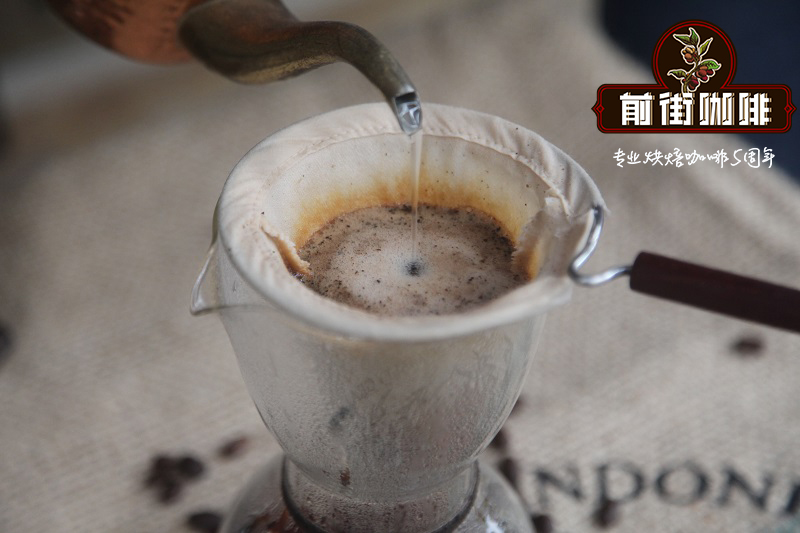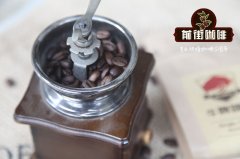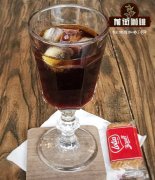Types and characteristics of coffee in global coffee producing areas with pictures to introduce what grade illy coffee belongs to

Professional coffee knowledge exchange More coffee bean information Please pay attention to coffee workshop (Weixin Official Accounts cafe_style)
Coffee bean type introduction 2 coffee taste…
bitter taste
The basic taste elements of coffee are the strength and texture of bitterness.
Raw beans contain only trace amounts of bitter ingredients, almost imperceptible. After that, the caramelization and carbonization of sugar, part of starch and fiber caused by roasting produce the most concrete bitterness of coffee. Caffeine, one of the bitter ingredients, is also an important substance showing pharmacological characteristics. In addition to being affected by the original species, the deeper the roasting, the weaker the pharmacological effect.
sour
Acid is the soul of coffee and makes people feel deep. Acidity is affected by the quality of green beans, but it is also related to harvest, storage time, roasting and brewing. Bitterness and bitterness constitute the two major factors affecting coffee quality and taste. Arabica is more acidic than Robusta in terms of variety; coffee grown in the upland is more acidic than coffee grown in the lowlands; and beans freshly harvested are more acidic than beans grown for a while. Generally speaking, the lighter baked beans are richer in acid.
Thick and sweet
Strong alcohol is the performance of coffee ripe, aromatic alcohol, strong taste, chemically it refers to the removal of volatile components and water pure extract. The pure extract, which accounts for about 15% in raw beans, increases nearly twofold (30%) after baking. High coffee unique sweetness, and bitterness was one of the relationship, so refreshing taste, will have sweet. High quality tannins also bring sweetness. Sweetness is the product of moderate heat action, which can be lost if heat treatment is excessive during baking and brewing.
Back to the finish.
The aftertaste refers to the sensation left in the mouth, throat and esophagus after coffee is swallowed or spit out. Freshness is the most important factor causing sweetness. After drinking Espresso coffee made from fresh coffee beans, in addition to the aroma of coffee remaining from the mouth to the esophagus and the aftertaste after being stimulated, the throat will also have a numbing feeling lasting for about two or three minutes, and the whole intoxicating aftertaste will disappear after three or forty minutes.
1
Coffee Introduction 2 Types, Characteristics and Origin of Coffee…
Coffee beans are grown in 66 countries around the world, and can be classified into Arabica, Robusta and Liberica. There are four species of coffee trees in the world, but only two are commercially grown. One is Arabica and the other is ROBUSTA.
Arabica is the largest major coffee bean variety at present, with a yield of about 80% and excellent flavor and quality.
Arabica is the most cultivated in the world, accounting for more than 70% of the coffee supply, and is mostly grown in tropical Central and South America. The coffee bean is smaller in shape, oval in front, narrow and tortuous in the middle crack, and more complete in arc shape on the back of the bean. This coffee tree is difficult to grow. It prefers mild days and cooler nights, and cold, hot and rainy climates can hurt it. Arabica coffee trees need to be planted on inclined slopes at high altitudes, so harvesting must be done manually, which is extremely difficult. However, due to the special flavor, rich taste and low caffeine of Arabica coffee beans, although it is difficult to grow, it actually accounts for 70% of the total coffee planted.
Robusta is often used to make instant coffee because of its poor quality.
Robasta coffee trees are found in Madagascar in central and eastern Africa and Indonesia in Asia. It was discovered late last century in Africa in the humid, hot Congo, formerly a Belgian dependency. The trees and leaves are bigger than Arabija. It's coffee beans larger, more rounded front, back into a round convex, crack straight, a bit like a big coix seed. Robasta coffee trees are resistant to high temperature, cold, drought, moisture, and even disease attacks (especially leaf spot), and have the characteristics of multiple harvests. Adaptability is very strong, in the flat can grow very well, so harvest does not necessarily need manual, can be used vibration machine. In terms of cultivation, robasta coffee trees can be said to have many benefits, but unfortunately the coffee beans produced are less aromatic, bitter, and lack acidity, and the caffeine is twice that of arabica. Therefore, robasta coffee beans are mostly used for brewing iced coffee, instant coffee and canned coffee, as well as blending.
Liberica is rarely mentioned because of its quality and low yield. Coffee has a unique aroma that is hard to resist; the unique flavor is loved by everyone
List of coffee producing areas
name
English-speaking countries and regions
bei
note
acid
gan
bitter
alcohol
Xiang
blue Mountain
BLUE MOUNTAIN
Jamaica (West India)
Central America
○
●
●
●
Ji
no.
table
shown
●
strong
◎
in
○
weak
mocha
MOCHA
Ethiopia
Africa
●
◎
●
●
Brazil
BRAZIL
Brazil
South America
○
○
○
Java
JAVA
Indonesia
Asia
●
○
Jamaica
JAMAICA
Jamaica (West India)
Sino-US
◎
◎
●
◎
Mandheling
MGNDELING
Indonesia (Sumatra)
Asia
●
●
●
Guatemala
Guatemala
Central America
◎
◎
○
◎
◎
Colombia
COLOMBIA
Colombia
South America
◎
◎
●
Costa Rica
Costa Rica
Central America
○
○
◎
◎
Crimangaro
Tanzania
Africa
●
1
Coffee Introduction 2 Types of Coffee Drinks…
[Blue Mountain Coffee]
production Land: Jamaica, Colombia, Honduras, Guatemala
It is coffee beans produced in Blue Mountain of Jamaica at an altitude of more than 2500 feet. It is a kind of slightly sour, soft, sweet and delicate coffee. Pure Blue Mountain coffee tastes (sour and bitter) and has a light fragrance, but it tastes very mellow and delicate. It is a coffee that can be enjoyed as a single product. The aroma is elegant, slightly chocolate sweet, with aristocratic taste. It is the best coffee.
[MOCHA]
production Location: Yemen
Mocha Coffee is one of the world's leading coffee beans. At present, the coffee produced in Yemen is the best, followed by Ethiopian mocha; mocha coffee with lubricating acid to strong acid, sweet nature is particularly good, unique flavor, such as yoghurt flavor unique, containing chocolate taste; with a noble woman's temperament, mouth aftertaste fragrance lasting. It's a very distinctive pure coffee. Brand names are usually named directly from the name of the place of origin, while "mocha" is the name of the port where Europeans first bought coffee, facing the Red Sea. Mocha Matari is the top and most popular variety. Even when used as a coffee blend, it is very popular because it can suppress the shortcomings of other coffee beans. Mocha, Brazil, and Colombia are known as the "Triple Crown" and most blended coffees use mocha coffee.
[Cappuccino]
production Land: Italy
Cappuccino is a soft foam that floats on top of espresso. In Italy, a morning cappuccino is a deeply ingrained fad. A layer of foam floats in the bitter espresso, making it rich in flavor and mild in taste. The bitter taste left in the mouth after drinking can make the drinker enjoy the aroma of baking. Sprinkle cinnamon or lemon peel on top to accentuate the fragrance, or a different flavor.
[Colombia Coffee]
production Land: Colombia
Colombia coffee to SUPREMO the most characteristic, its coffee soft strong alcohol, sweet; with a slight acid to acid, its quality and aroma stability, belongs to the medium coffee, is used to blend the top grade of coffee. Colombia coffee beans are graded according to particle size, and the top variety "Colombia·Spremo" accounts for only about 10% of all coffee beans. However, the standard "Colombia·Iselso" is also a kind of high-quality raw beans, whether it is a single or comprehensive drink, are popular with the public.
[MANDELING]
production Land: Indonesia, Sumatra
Is produced in Indonesia, Sumatra, the most representative coffee; mantnin flavor fragrant, strong, bitter, taste quite strong, but soft without acid, in the name of origin, bitter is its unique, in the case of deep roasting the most appropriate use. It is the most expensive coffee bean and the highest quality coffee produced in Indonesia.
[CHARCAL FIRE]
It is a heavy roast coffee, taste charred, bitter without acid, coffee beans have the phenomenon of oil, very suitable for steam coffee.
Brazilian Coffee (SANTOS)
Place of origin: Brazil (Brazil is the world's largest coffee producer, accounting for about 1% of the world's output. The most famous is "Brazilian Santos Coffee".
Among them, "No.2 Screen18" is the highest variety. )
Brazil is the number one coffee producer in the world. Brazilian coffee is mild, slightly sour and slightly bitter. It is the representative of neutral coffee and an indispensable variety for the blending of mild coffee. The most popular way to drink Brazilian coffee is not to add cream, but only sugar. Therefore, when drinking "Brazilian coffee", you can have fun as long as you add granulated sugar.
Important Notice :
前街咖啡 FrontStreet Coffee has moved to new addredd:
FrontStreet Coffee Address: 315,Donghua East Road,GuangZhou
Tel:020 38364473
- Prev

Kenyan coffee grading system on how to brew? Flavor description? What taste?
Kenyan coffee grading system on how to brew? Flavor description? What taste? The coffee grading system in Kenya was established under the policy of the government leading the management of quality and tutoring coffee farmers. After the coffee was harvested, the official unit of the Kenya Coffee Agency (Coffee Board of Kenya referred to as CBK) was established in 1933 in the capital Nairobi (N).
- Next

How to find the type and flavor of coffee beans that suit you? types of Arabica coffee beans
For more information on coffee beans, please pay attention to the taste of coffee beans in the coffee workshop (Wechat official account cafe_style). It is a feeling caused by direct chemical stimulation, which is composed of sour, sweet, bitter and salty tastes, which refers to the ability to feel the taste of substances. Enter through the mouth and feel the taste carefully through the tongue, while coffee can
Related
- Detailed explanation of Jadeite planting Land in Panamanian Jadeite Manor introduction to the grading system of Jadeite competitive bidding, Red bid, Green bid and Rose Summer
- Story of Coffee planting in Brenka region of Costa Rica Stonehenge Manor anaerobic heavy honey treatment of flavor mouth
- What's on the barrel of Blue Mountain Coffee beans?
- Can American coffee also pull flowers? How to use hot American style to pull out a good-looking pattern?
- Can you make a cold extract with coffee beans? What is the right proportion for cold-extracted coffee formula?
- Indonesian PWN Gold Mandrine Coffee Origin Features Flavor How to Chong? Mandolin coffee is American.
- A brief introduction to the flavor characteristics of Brazilian yellow bourbon coffee beans
- What is the effect of different water quality on the flavor of cold-extracted coffee? What kind of water is best for brewing coffee?
- Why do you think of Rose Summer whenever you mention Panamanian coffee?
- Introduction to the characteristics of authentic blue mountain coffee bean producing areas? What is the CIB Coffee Authority in Jamaica?

